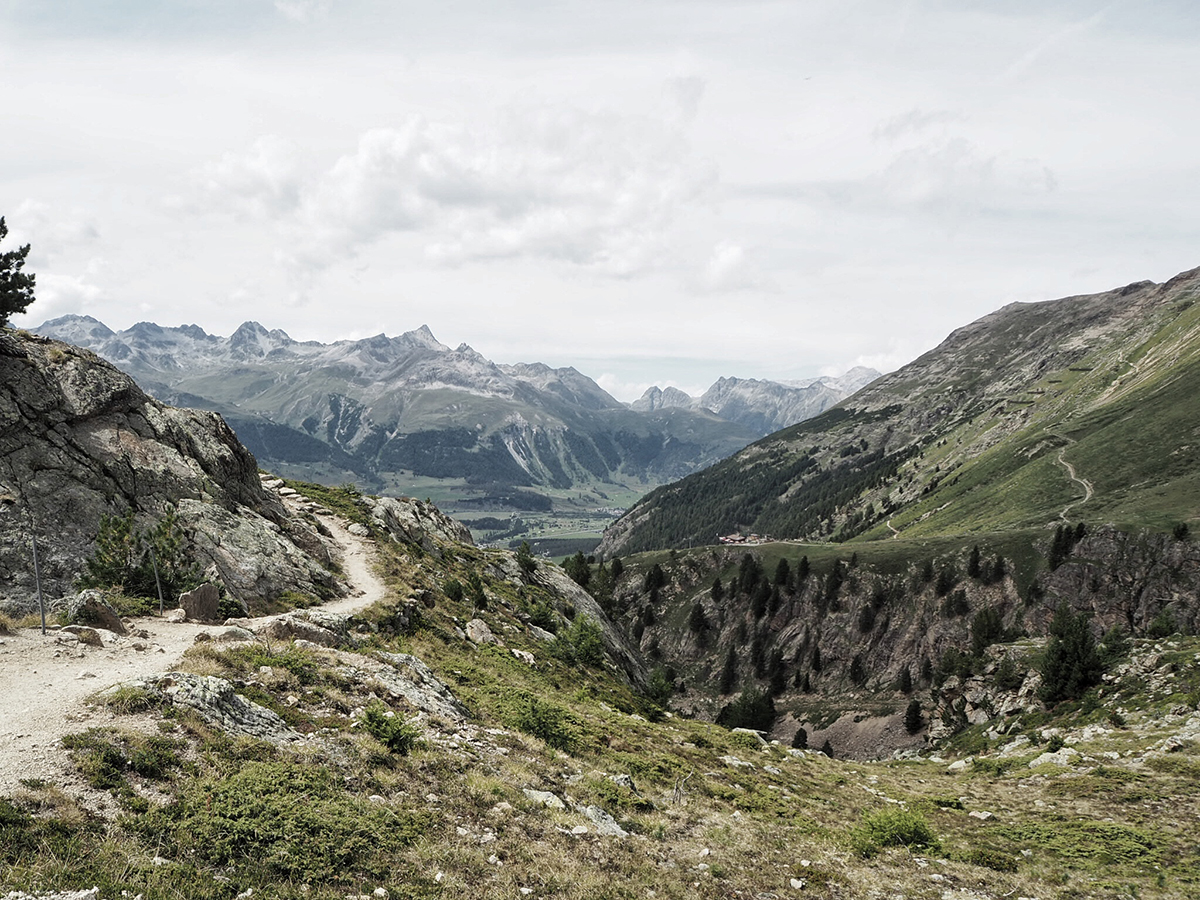
A view across the Engadine valley from Muottas Muragl, above St Mortiz
Switzerland’s Engadine region has been the enchanted holiday home of the likes of Friedrich Nietzsche, Gerhard Richter and some of the world’s most discerning wealthy. LUX takes a summertime tour of this romantic paradise
Landscape photography: Isabella Sheherazade Sanai (@sheherazade_photography)
There was a moment in the evening, a point in the flow of time each day, when the colour on the mountain was perfectly balanced. Just below my balcony, the larch forest rising out of the lawn was an almost vanishing green, turning to black. The same forest was a dark emerald high up the mountainside. The high pastures above, a thin carpet of melded brown and dry, light, green. And the peak of the mountain, that minute, was just straining to catch the last of the day’s sun, emanating from behind the hotel, on the west side of the valley. It was the colour of a tarnished gold ring, glowing with the pride of being in daylight, today, while the rest of us had fallen into tonight.
Out of the trees and grass around me, the image was accompanied by a rising smell of damp, green, earthy life, its textures matching those in the glass of wine that would always accompany this ritual, a glass of pinot noir from two valleys away, in what the Swiss call the Bündner Herrschaft.
Follow LUX on Instagram: the.official.lux.magazine
The Waldhaus Sils, where my room and balcony were, is known for its magic. Artists, writers, musicians and poets are guests there, sometimes invited by the hotel for the inspiration they bring. Gerhard Richter, arguably the greatest living artist, unarguably one of the most expensive, was staying while I was there; as were others from these worlds, whom I won’t identify as I didn’t spot them personally (the Waldhaus is very discreet about its guests).
The hotel sits on a forested ridge (thus the name Waldhaus – ‘Forest House’) above the village of Sils, once home to Friedrich Nietzsche, and overlooking Lake Sils, considered by many in the art world to be the most beautiful lake in Switzerland. The lake is at the southern end of the Engadine, a broad, flat, high-altitude valley making a slash through the most mountainous part of the country, its southeast corner, from Austria to Italy.

The Waldhaus Sils sits in a forest above the mystical Lake Sils, which has inspired poets, artists and writers since the 19th century
There is something about the Waldhaus Sils that no amount of money could create in a new hotel. The furnishings, from light fittings to tables, chairs, cabinets and even the signposts, look like they have come from a mid 20th-century Modernist sale at Phillips auction house. They are so perfectly positioned, as if everything has been looked at with aesthetic sight-lines in mind, and yet none of it feels Designed (with a capital D); this is just the aesthetic of the family who own the hotel. No wonder Richter and others love it so.
The Waldhaus mixes old, in the sense of mid-20th century, with a very up-to-date cuisine and wine list. Most guests take the half-board option, with dinners in a broad gallery of a dining room, with picture windows looking into the forest. Most memorable were the variations on a consommé, each night made with a different base stock; and the choucroute and pork fillet served by a visiting farmer-chef one evening.
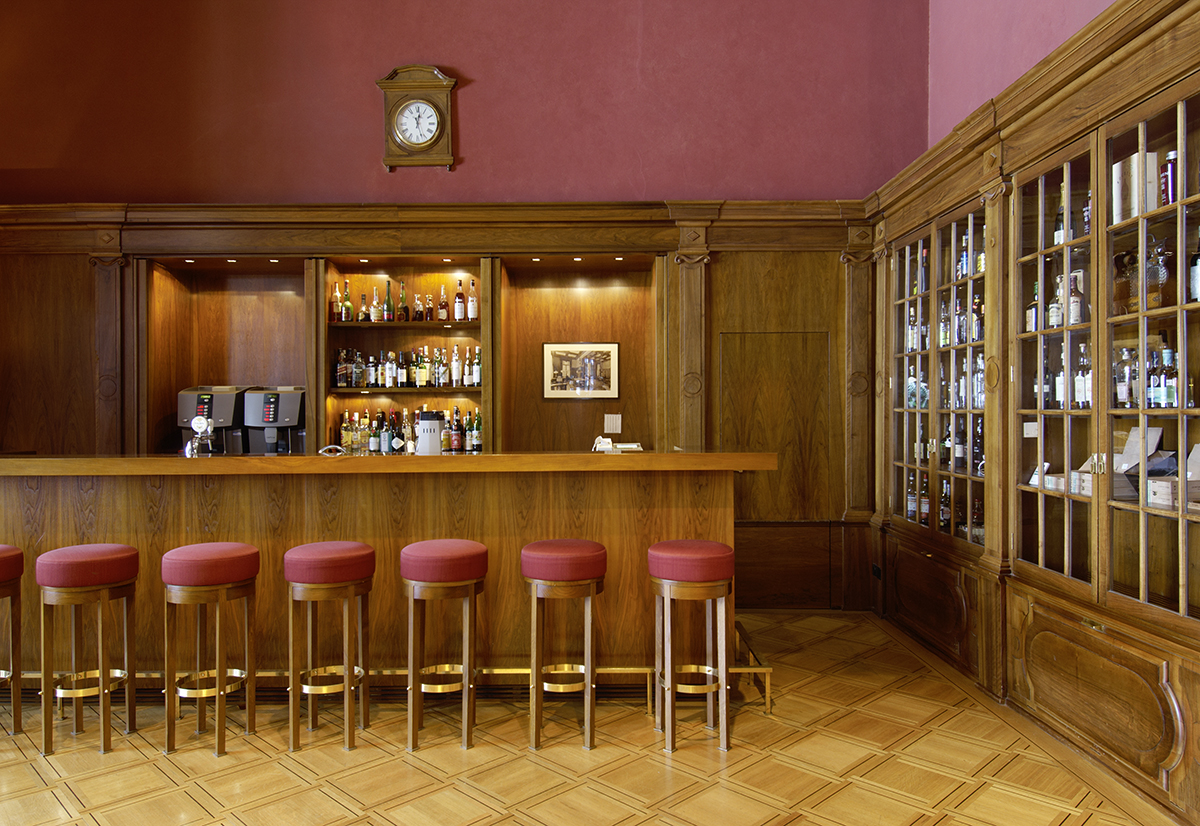
One of the bars at the Waldhaus Sils
One day, we walked out of the hotel down through the trees until we reached the floodplain of the lake, a flat meadow between the shore and the village. It was a summer day of intense mountain sunshine – you burn much more quickly here at altitude than down on the Mediterranean – but a flapping, chilly wind reminded us of exactly where we were. Along the lakeshore, a child and a dog were paddling in the water, on a tiny beach sprouting out of the path. The path itself curved past a tiny jetty housing a couple of rowing boats, and onto a forested promontory. Dipping and rising between larch trees and the water’s edge, it offered a different perspective every minute, with changes of light and in the colour of the water on the lake. The mountains beyond emerged bigger with every step we took away from them; my own mountain, which I had watched from the balcony, was revealed to be no more than the leading ridge of a much larger cluster of peaks at the end of what was a hidden valley.
Read more: Welcome to the age of internet art
We walked along that valley the next day. To get there, we first took a cable car from Sils up to a station above the treeline, from where we looked down at a string of lakes extended all the way down the Engadine past St Moritz, and were greeted by a pack of manic, crested chickens sprinting around a coop with a view most humans would crave. We walked along a path skirting the edge of the mountainside, past uncurious cows, until a luscious green valley, alternating meadows, streams, forest and hamlets, appeared beneath us. Invisible from the Engadine, this is Val Fex, home to some of the most ancient communities in Switzerland, who used the secret nature of the place (its entrance is sheathed in a deep, forested gorge which looks impassable from below) to shelter from invaders from Italy and the Germanic lands.
Along a woodland path at the bottom of the little valley, home to thousands of butterflies, we reached the Hotel Fex, where we had a fantastic lunch made of foraged and farmed local ingredients – young beef, herbs, grasses and flowers – while gazing at the high end of the valley. It was an hour’s walk, down past the butterflies and the meadow and through the gorge, to the Waldhaus and a balcony view back up to the sunset peak.
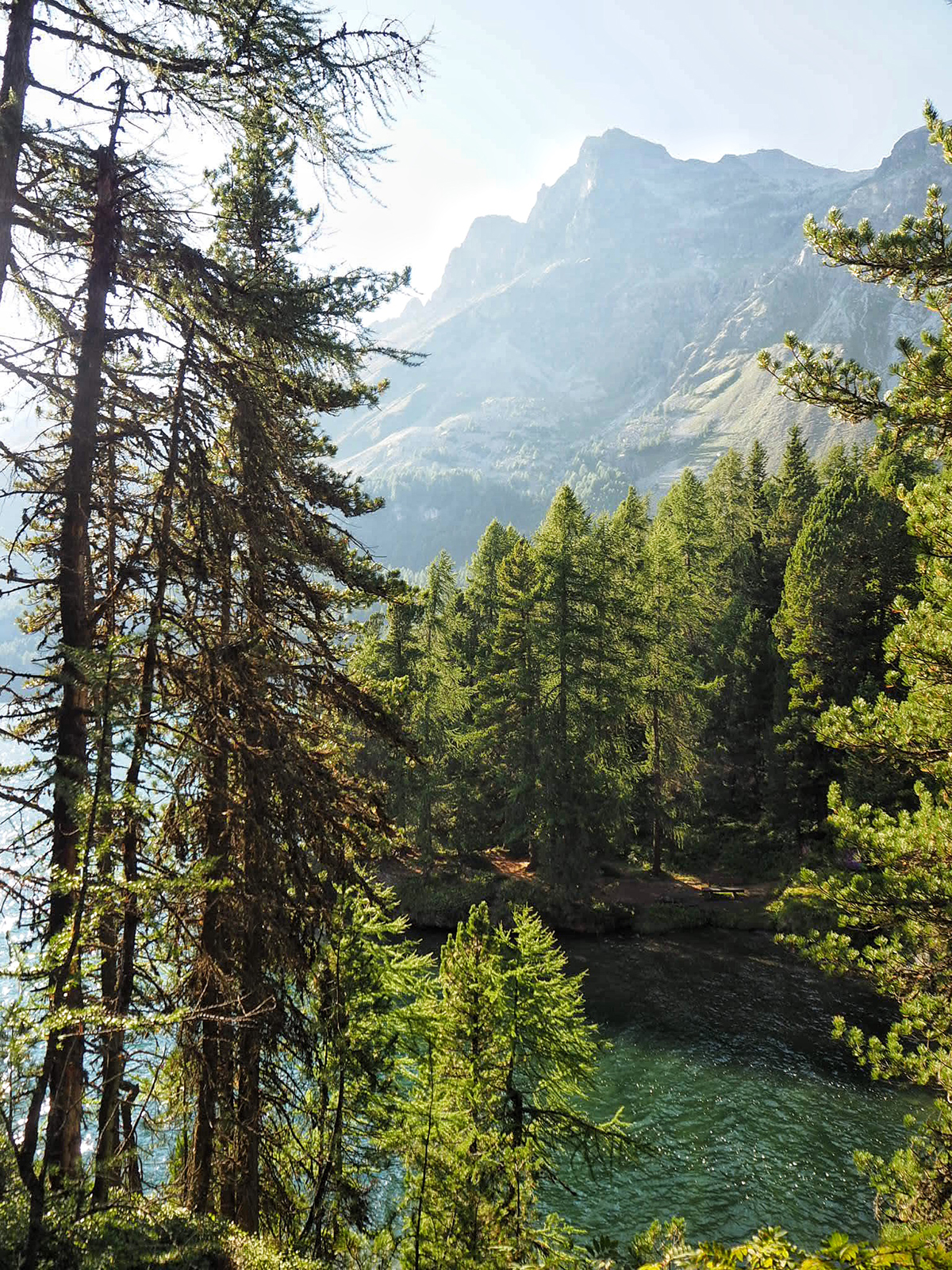
The forested peninsula on Lake Sils, nearly 2km above sea level
St Moritz is fifteen minutes’ drive down the Engadine valley from Sils, and it has a roster of legendary palace hotels. Our destination was just outside the town of St Moritz, on a hillside. Suvretta House, one of the oldest grande dame hotels of Switzerland, surveys the surrounding scenery like a majestic ocean liner atop a wave. As we approached from Lake Silvaplana, it was almost as if nature had bent to the grand hotel, according it its centre-stage position, with nothing around it except forest and lakes, on a ledge in this long, high valley.
That was an illusion; within a couple of kilometres of Suvretta House lies one of the highest concentrations of (vacation) wealth in the world, but part of this area’s appeal is that it doesn’t look like it.
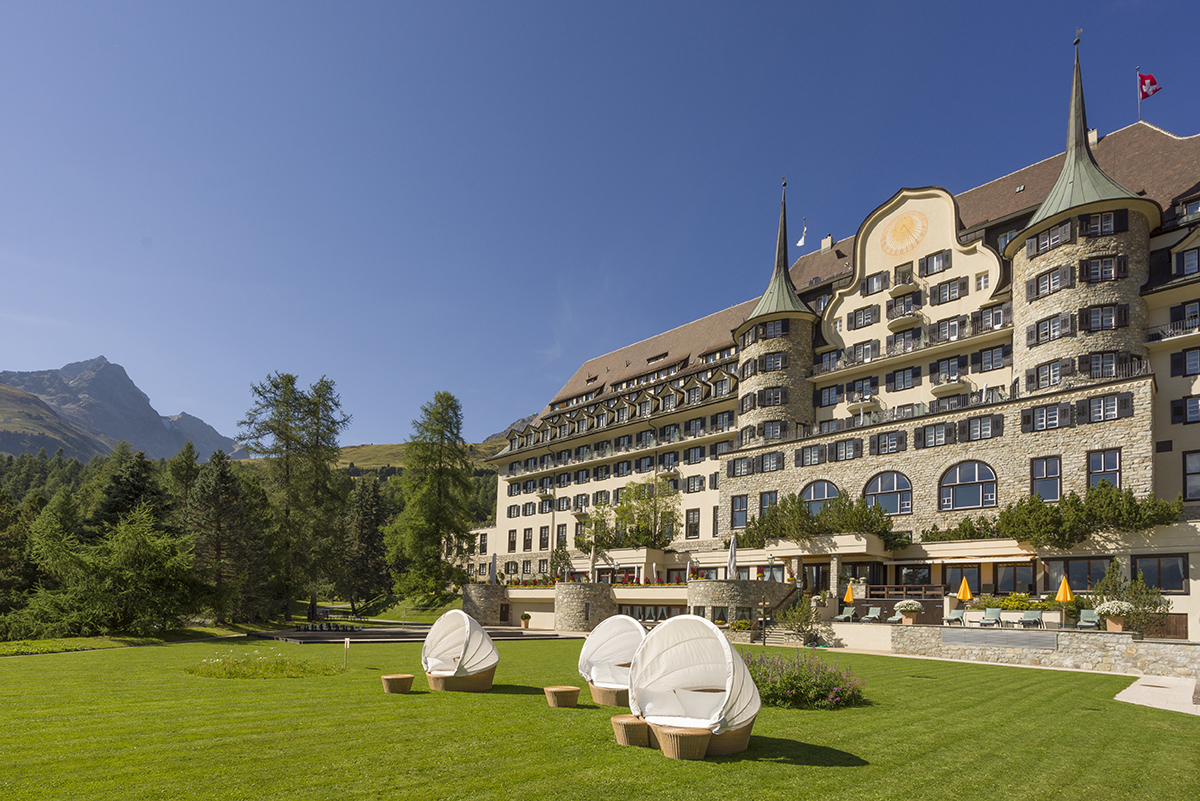
The facade of the historic Suvretta House hotel
Our junior suite at Suvretta House had six windows opening out onto a carpet of forest below, the lakes ahead, and the peaks of the Bernina range on the east side of the valley beyond. The décor was clean and crisp, a kind of safe contemporary Swiss, with plenty of rich fabrics to please luxury’s traditionalists.
The Bernina mountains are one reason for the particularly attractive climate here; they protect the area from storms sailing up from the Adriatic beyond, while to the north and west, several ranges of high mountains stand as a kind of climatic Berlin Wall to prevent the moist Atlantic air of northern Europe arriving. The result is that this is the sunniest spot in Switzerland; and Suvretta House itself lies on a sun-trap of a ridge. We discovered this the next morning, on a pre-breakfast frolic in what must be the most picturesque children’s playground in the world, carpeted in lush grass, banked on three sides by Alpine forest and on a fourth by a slope leading down to the hotel.
Read more: The Getty LA launches an African American Art Initiative
At the front of Suvretta House, the 25-metre indoor pool stretches through a conservatory alongside a broad lawn, on which sun-loungers, a giant chess set, and other leisure accoutrements are set (in summer, anyway; in winter, it would be under several metres of snow).
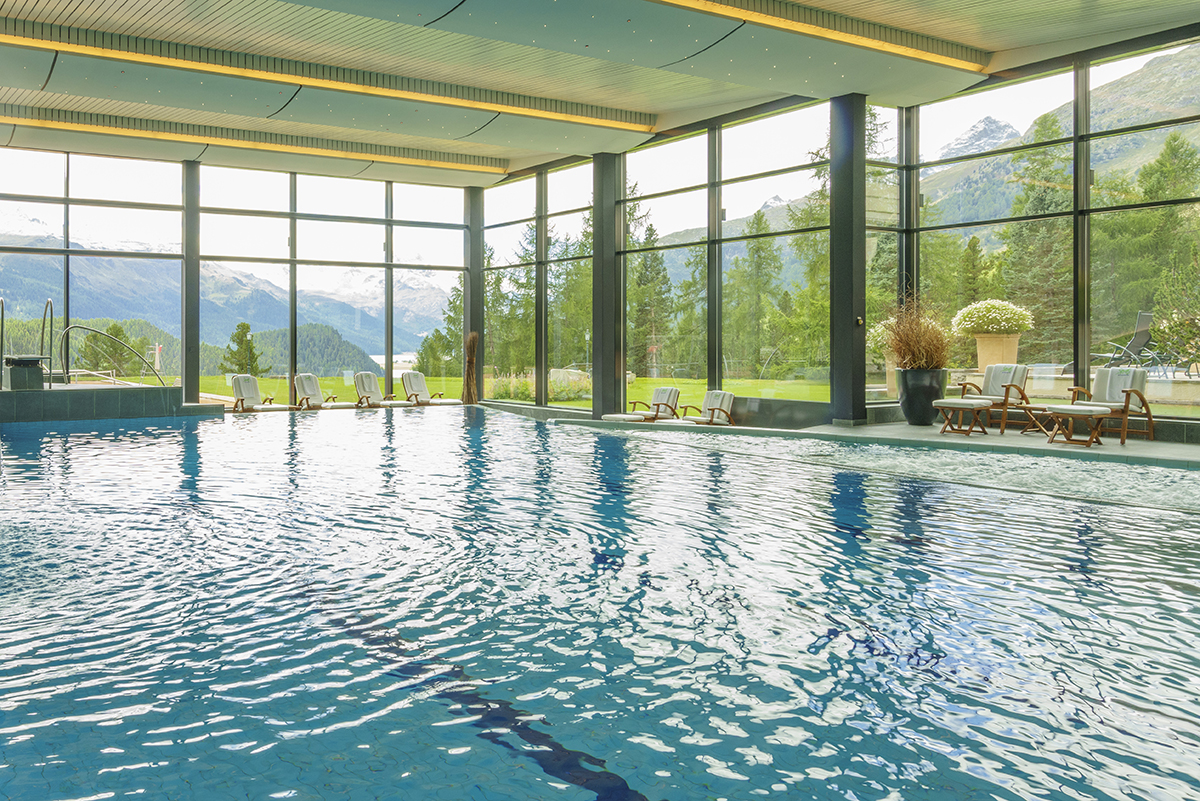
Suvretta House’s swimming pool

The Fuorcola Surlej restaurant above St Mortiz
Breakfast was served at the Arvenstube restaurant, and featured about 36 different types of bread, cooked (and shaped) in their own in-kitchen bakery every day from three in the morning. The buffet seemed lavish enough, until we found it extended around the corner with dozens of combinations of freshly cut fruit, more permutations of gluten-free cereal than would fit on the biggest yoga mat, an array of nuts, seeds and other health-giving items that would embarrass a health food store, and still plenty of indulgences on the pancake/ chocolate/Nutella/cooked bacon front.
We returned to the Arvenstube for dinner, at first a little apprehensive. Almost every hotel in the German-speaking Alps has a restaurant called a stube; in humble hotels these are often beer-cellar-type places serving humble food (sausages, dumplings) and good beer. Luxury hotels sometimes persist in the belief (mistaken, in our views) that a luxury stube ought to be a play on these dishes, with lashings of old- fashioned Michelin-chasing creams, foams and drizzles, and tiny portions that make you wish you had gone out for some fondue instead.
What we found instead was a revelation. In the beautiful evening light as the valley turns to night – the Arvenstube faces south – there was a menu based on the concept of ‘Switzerland meets Latin America’ from chef Isaac Briceño Obando, and it really worked. Examples: Puschlaver lamb, baby corn, roasted spring onions, tortilla powder and mountain honey; or Swiss cheese, guava jelly, tamarind jelly and paprika coulis; or tepid char with grilled peach, palm hearts and pine nuts. It was the distinctive, balanced, vivid cuisine of someone with a real ability to understand how and by whom his dishes would be consumed. We returned there three times and always had clear, crisp options.
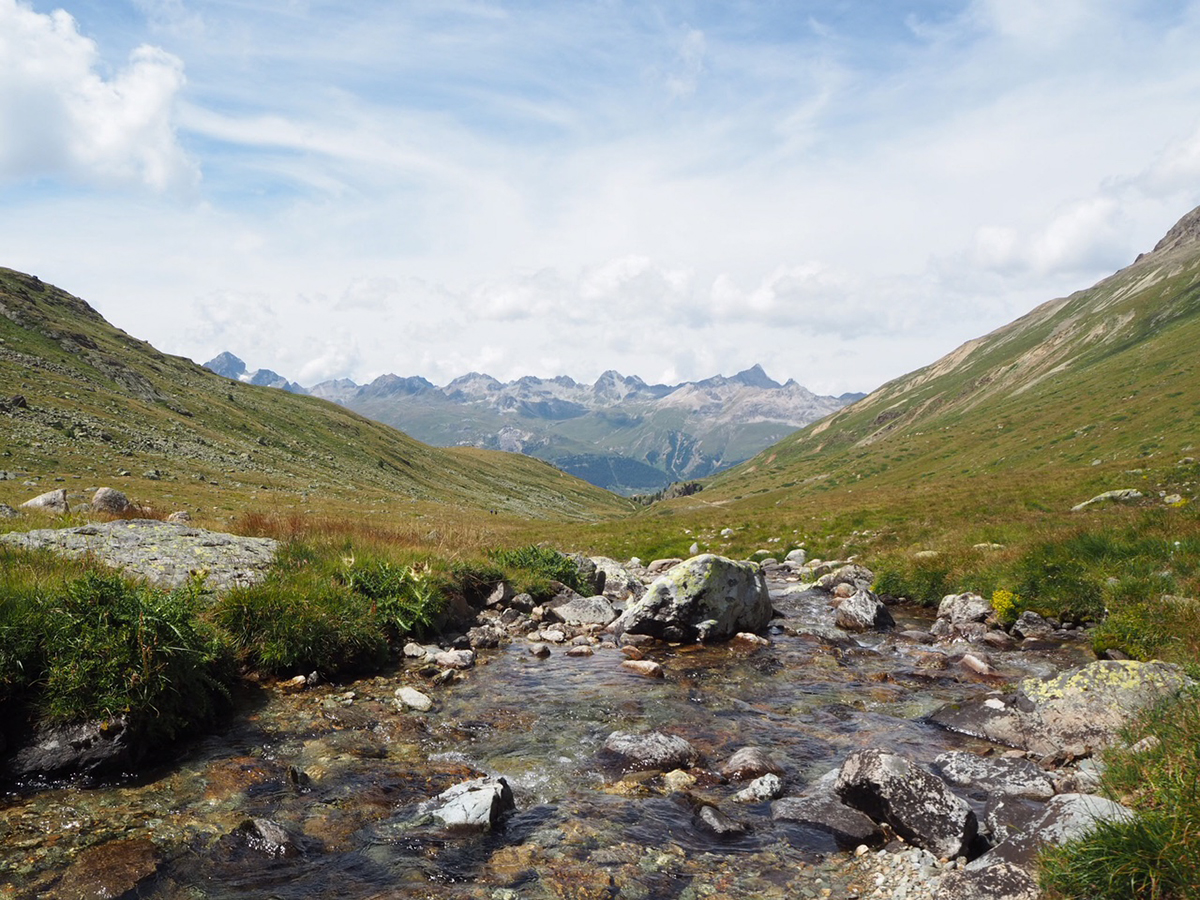
On the path to the aptly-named Paradise hut, above Pontresina

Goat’s cheese with rocket and truffle at Chasselas
The Suvretta House also owns the Gault Milau-celebrated restaurant just up the road, the Chasselas. At the bottom of a piste, with its own chairlift linking it to the main Corviglia ski area of St Moritz, the Chasselas tries hard to look like a pristine, immaculate but humble mountain hut; however, the cuisine and wine list are anything but humble. We loved the medium-grilled saddle and braised cheeks of Iberico pork with artichokes, balsamic onions and plain in pigna, and Irish highland lamb racks with salsa verde, grilled vegetables and barley risotto. Different chef, but the Suvretta principles remained: there was nothing on the menu to weigh you down and make you feel, like many mountain restaurants do, that you need to climb the nearest peak to burn everything off.
It’s tempting never to leave Suvretta House (either during your stay, or when it’s time to depart) but we did, one day taking a cable car up the opposite side of the valley, towards Piz Corvatsch, and walking along a rocky, dramatic, high altitude trail until we reached a restaurant in a little mountain hut on a ridge. The other side of the ridge revealed a little lake, and a flabbergasting view down to a glacier and up to a range of high, snowy, rocky peaks. Fuorcula Surlej, the restaurant, really is a humble mountain hut. The owner told us she lives there, with only her dog for company, all summer and all winter; when she returns after her autumn break to open up for the ski season, all the available water is frozen in blocks of ice and she curls up with her dog to keep warm.
A small staff in her kitchen were making dishes off a short menu; we tried the barley soup, which tasted of fields and mountains together as we ate it on the terrace, looking out at the high peaks framed by dreamy deep blue; followed by a spaghetti with ragu, flavoursome home-made food by someone whose home is a ridge at the top of nowhere, towering above the Engadine.
Darius Sanai
For more information and to book your stay visit: waldhaus-sils.ch; suvrettahouse.ch
This article was first published in the Winter 19 issue.



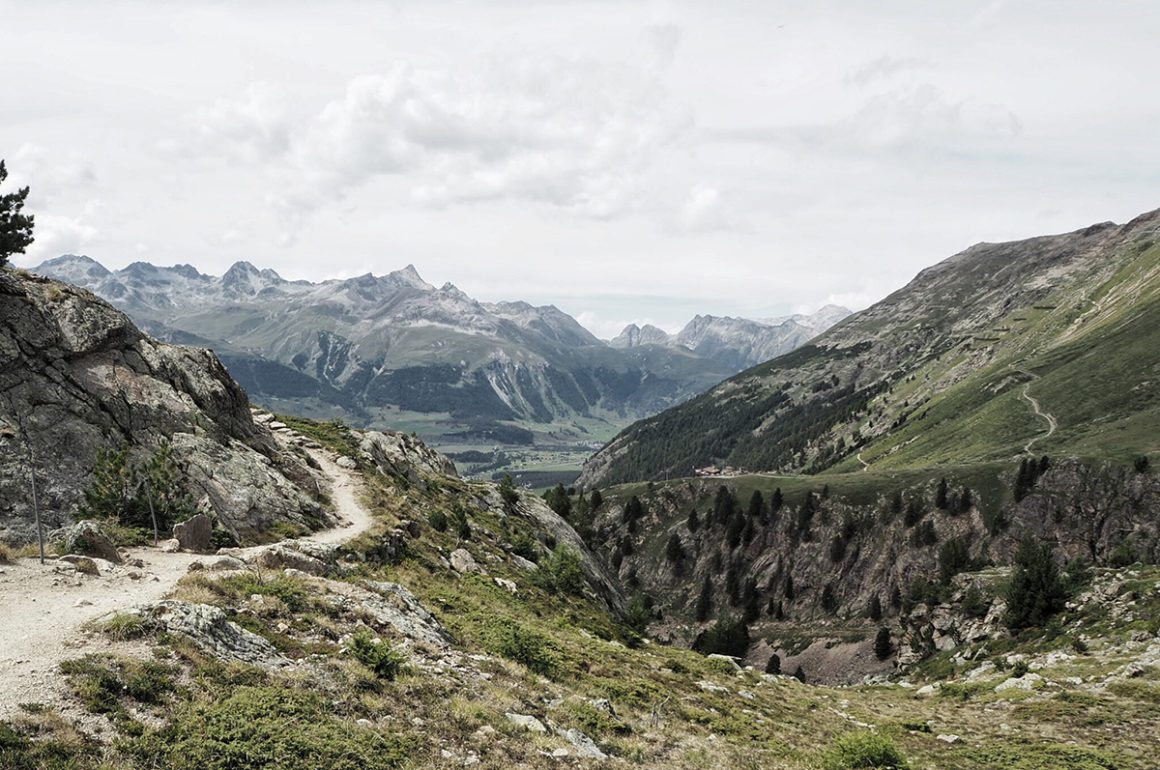
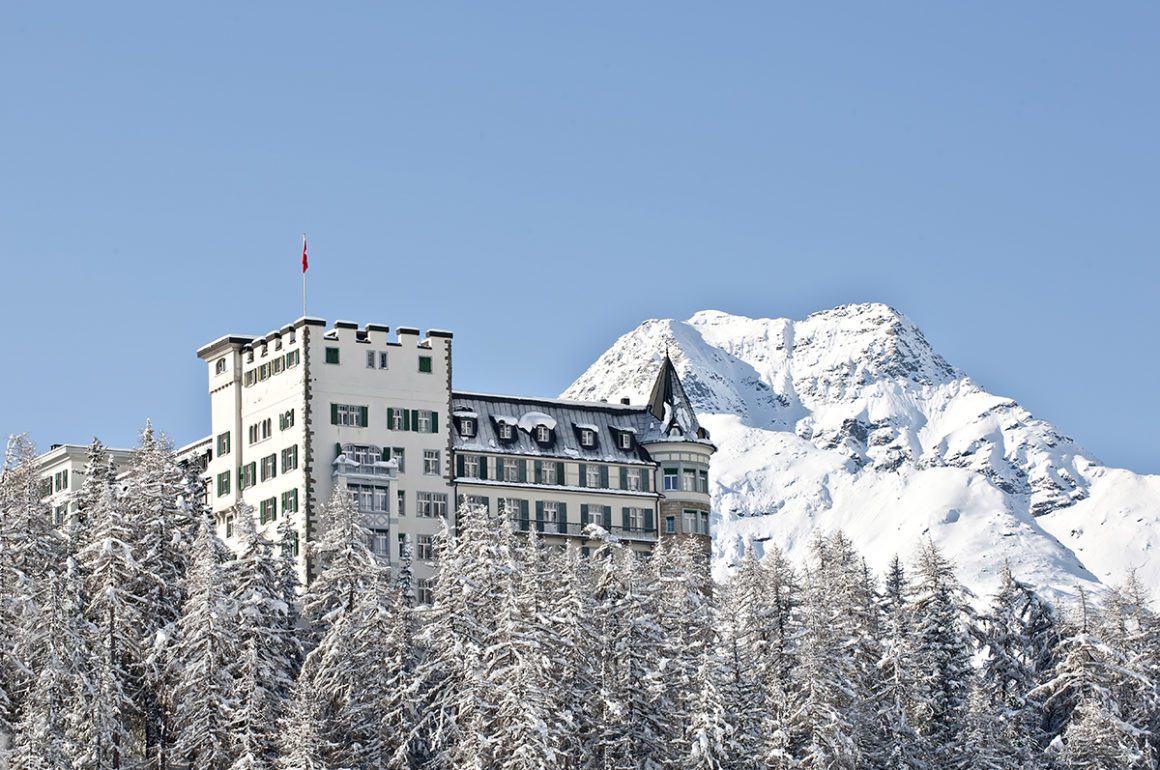
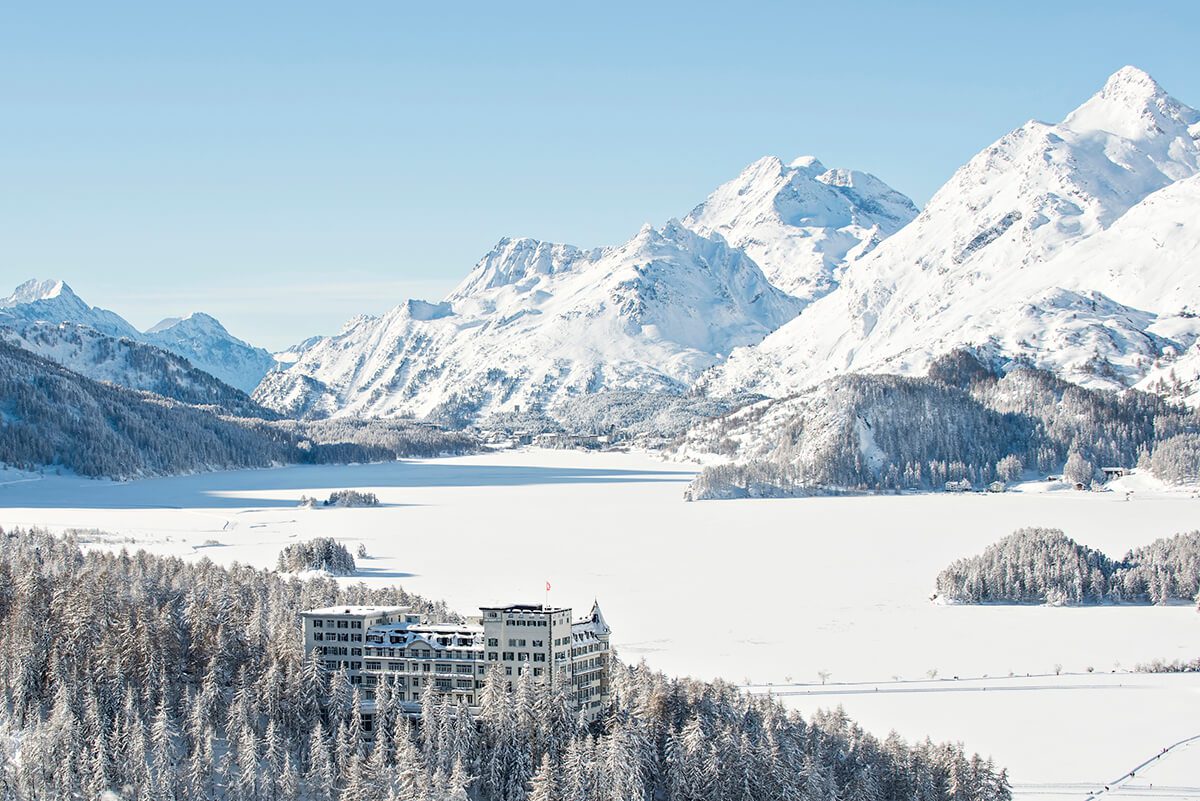
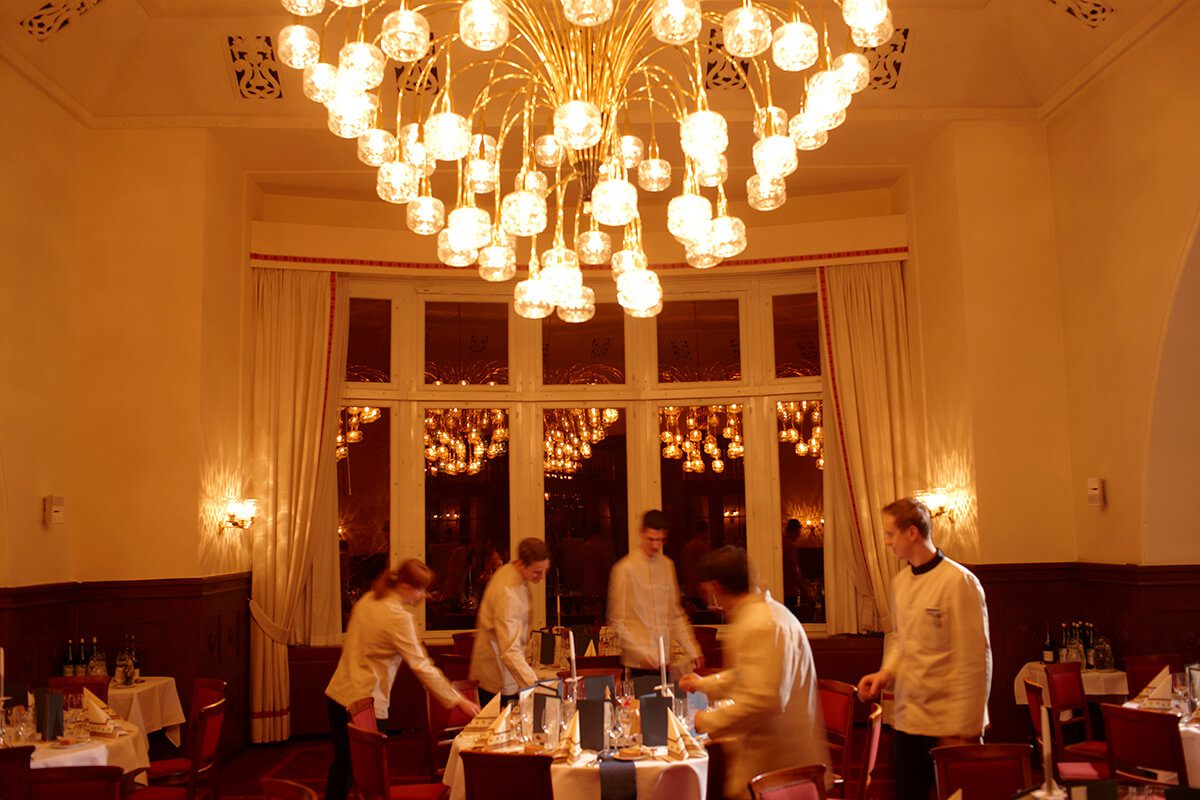
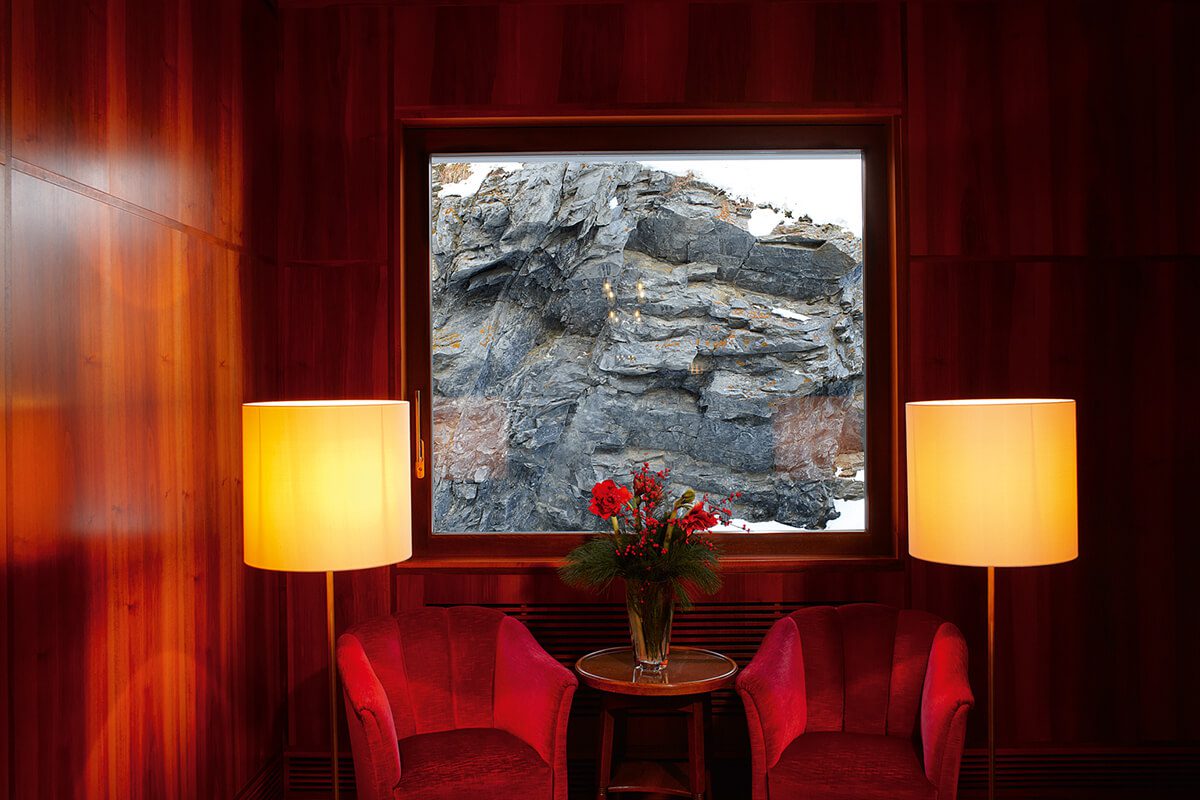
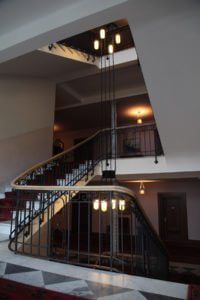
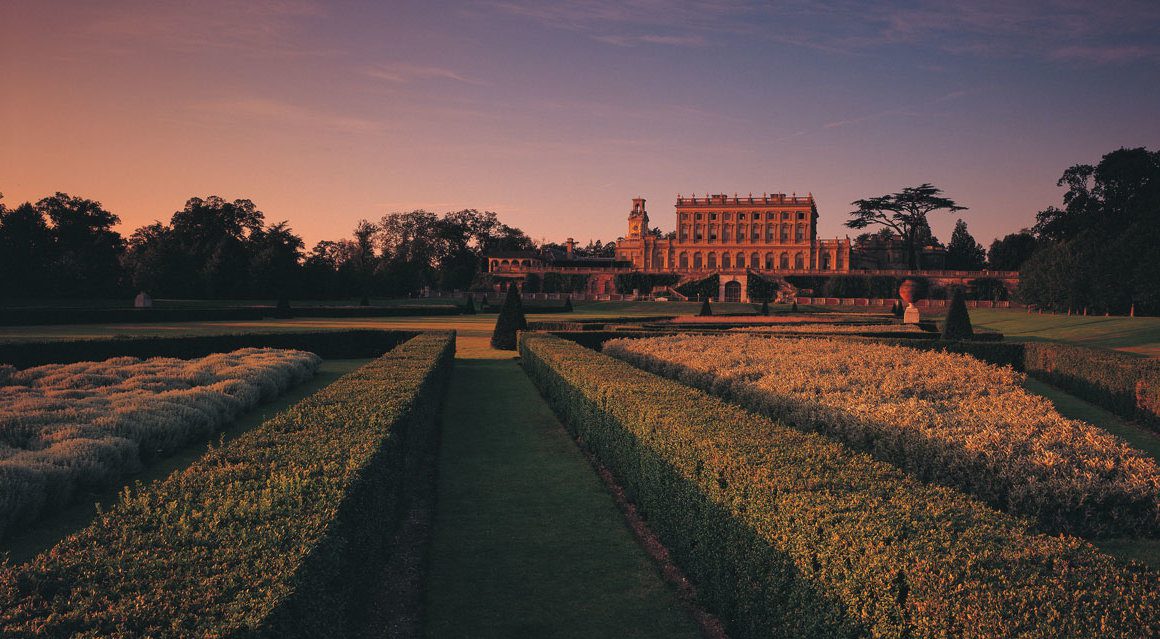
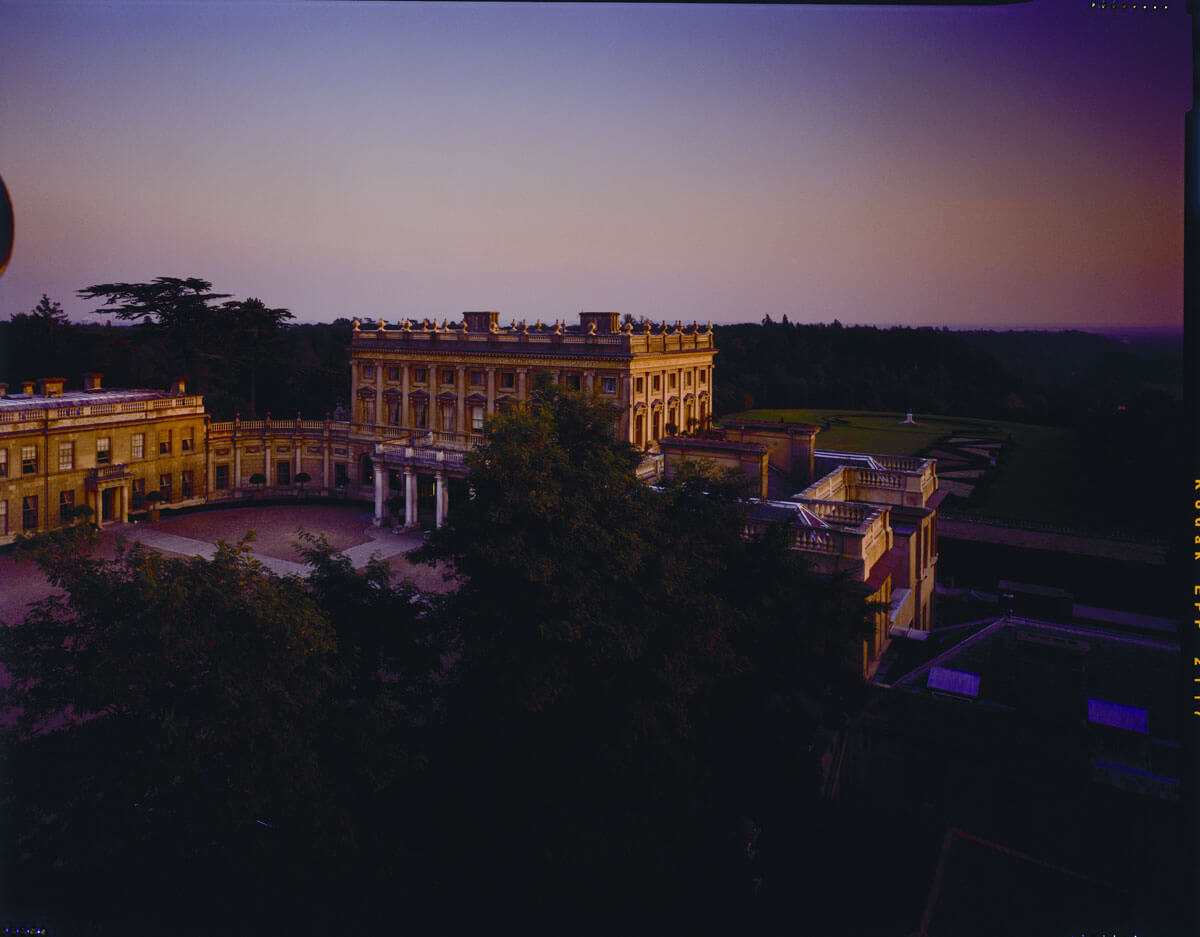
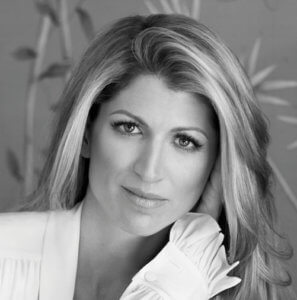
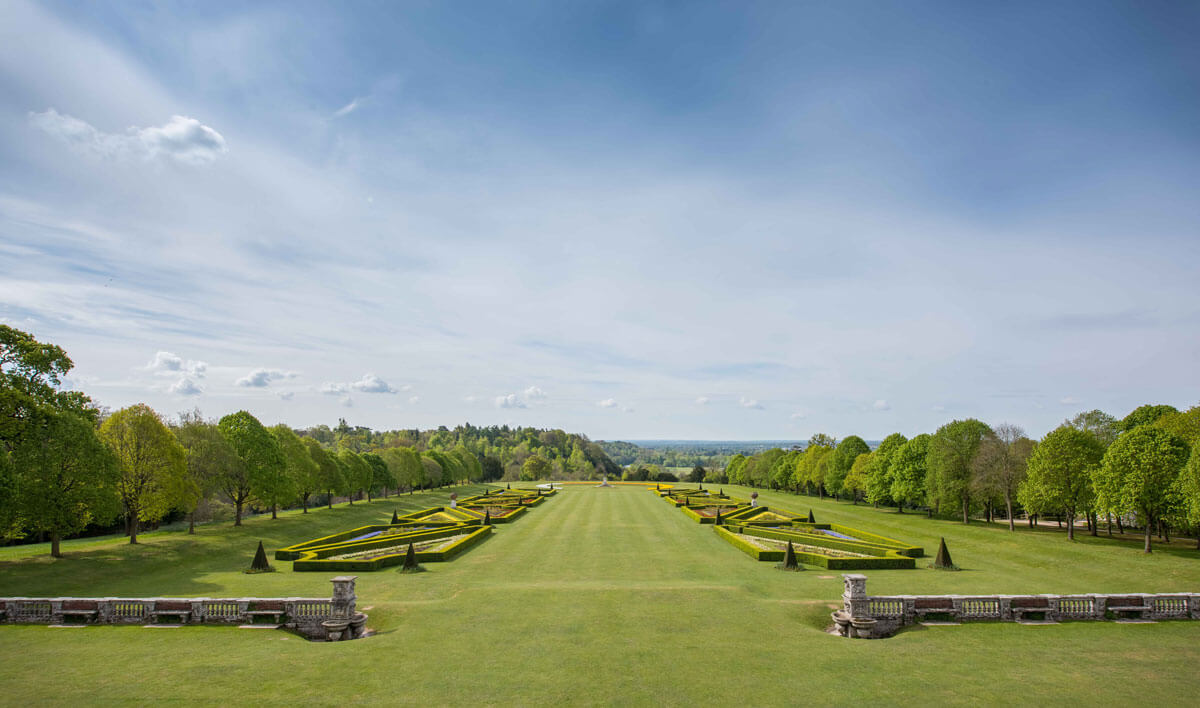

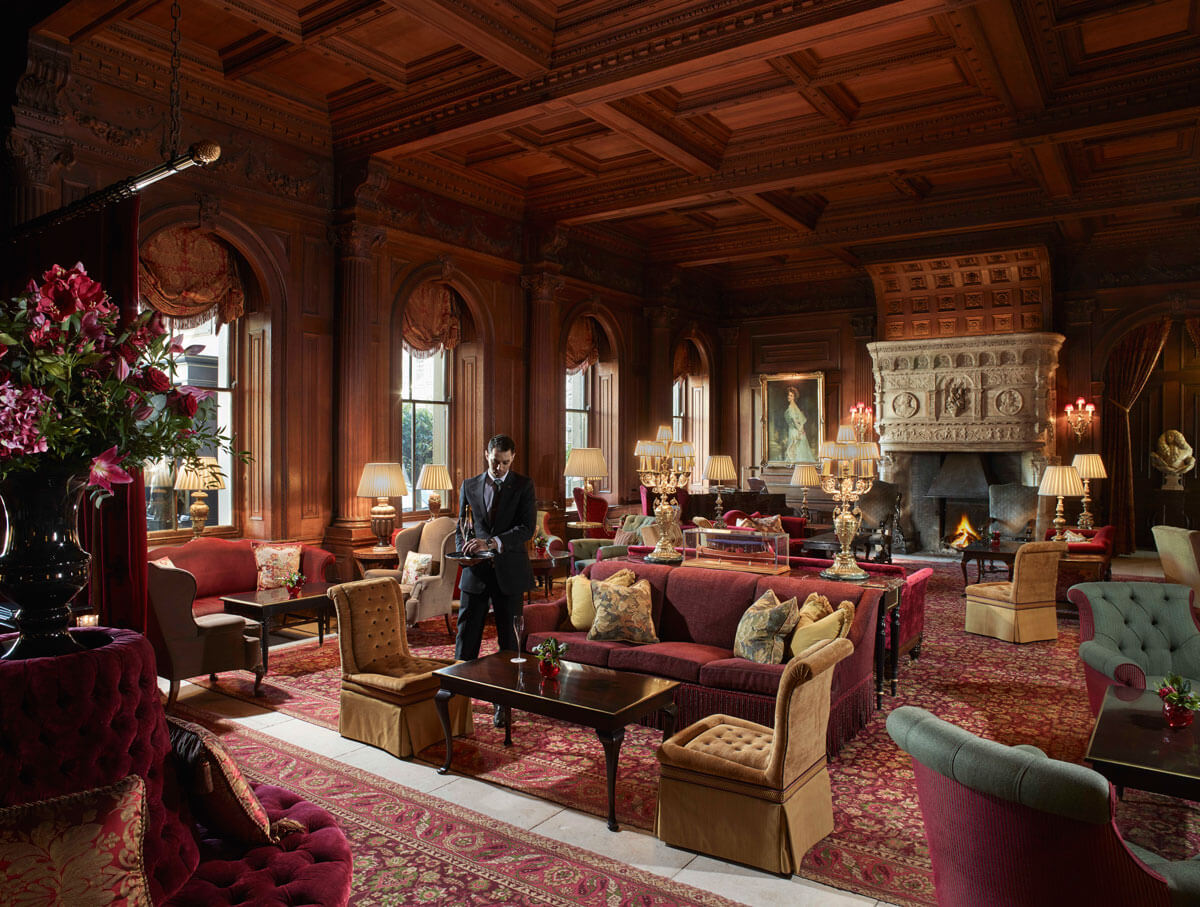
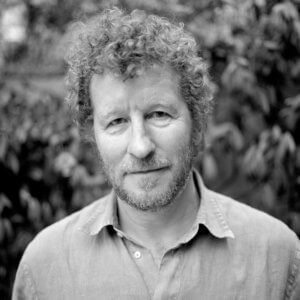





Recent Comments